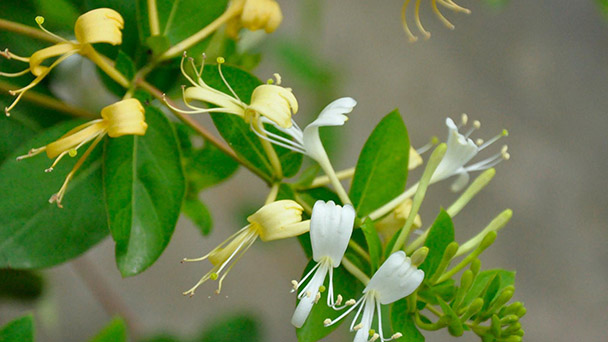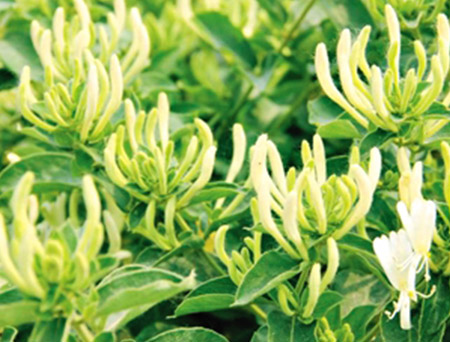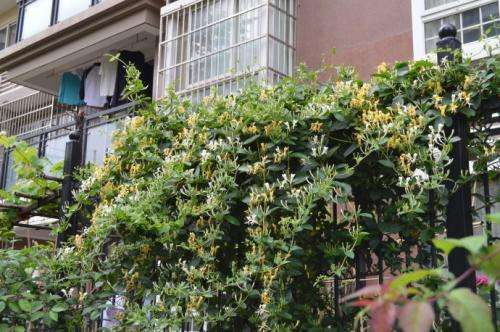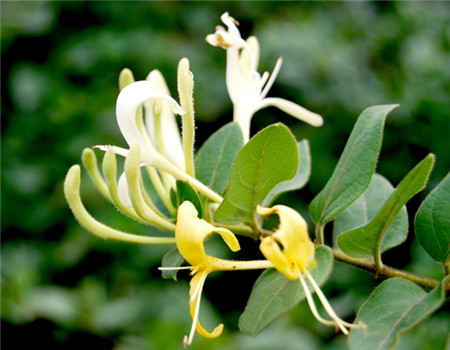How to grow Lonicera japonica Thunb
Written by Maggie
Nov 18 2020

Lonicera japonica Thunb is highly adaptable, and the choice of soil and climate is not strict. The sandy loam with a thick soil layer is the best. Mountain slopes, terraces, weirs, dams, and barren hills can all be cultivated. Reproduction can use methods such as sowing, cutting and root division. Pregnancy buds bloom on new branches that year. The soil condition is not strict, and it can grow in acidic and saline-alkali land. It has a well-developed root system and strong rooting ability. It is a good soil-fixing and water-retaining plant. It can be planted on hillsides, river banks, etc.
Lonicera japonica Thunb picture

Lonicera japonica Thunb seed propagation
Sowing in April, soak the seeds of lonicera japonica thunb in 35-40°C warm water for 24 hours, take out the block 2 to 3 times wet sand to accelerate germination, and sow when the crack reaches about 30%. Ditch sowing on the border at a row spacing of 21-22cm, cover 1cm of soil, spray water once every 2 days, seedlings can emerge after more than 10 days, transplant after autumn or the second year in spring, use about 15kg of seeds per 1h㎡.
Lonicera japonica Thunb cutting propagation
It usually takes place during the rainy season. In summer and autumn rainy weather, choose 1 to 2 year-old Lonicera japonica Thunb that is robust and disease-free and cut into 30-35cm branches, remove the lower leaves as cuttings, and cut them for use. On the selected land, dig holes according to the row spacing of 1.6m and the plant spacing of 1.5m, and the depth of the holes is 16-18cm, and each hole has 5-6 cuttings, standing in a scattered shape and obliquely in the buried soil, with 7-10cm exposed on the ground. Soil compaction (sandy soil with good air and water permeability is better).
The cuttings should be shaded before rooting, and avoid direct sunlight to cause the branches to dry out. Cuttings can also be used to raise seedlings; between July and August, the row spacing is 23~26cm, the ditch is about 16cm deep, and the plant spacing is 2cm. Put the cuttings in the ditch obliquely, fill the soil and compact it for good air and water permeability. The sandy soil is the nursery soil, the roots open the fastest, and it is not easy to be invaded by pathogens and cause the branches to rot. Spray water once after planting, and then water once every 2 days when it is dry. Roots can take place in about half a month. In the second year, transplant Lonicera japonica Thunb in spring or autumn.

Lonicera japonica Thunb plastic trimming
Pruning is carried out from the fall of leaves in autumn to before germination in spring. Generally, light cuts are used for vigorous branches, strong cuts for weak branches, and both branches are cut. When pruning, pay attention to the ventilation and light transmission of new branches. Prune all the weak branches, dead branches, and basal branches. Pruning the plots with poor fertilizer and water conditions should be heavier. When the plants are old, cut the old branches to promote the development of new branches. Young Lonicera japonica Thunb plants are mainly cultivated plant types and should be cut lightly. For mountain plots, 4 to 5 trunk branches are generally reserved, and 1 to 2 trunk branches are reserved for plain plots. The trunk should be cut off. Make it thicker and stand upright.
Shaping is carried out in conjunction with pruning. In principle, it is based on fertilizer and water management. It is promoted as a whole, makes full use of space, and increases the amount of branches and leaves, so that the plant type of Lonicera japonica Thunb is more reasonable, and it can significantly increase flowers and yield. The flowering time after pruning is relatively concentrated, which is convenient for harvesting and processing. Generally, the branches can stand upright after pruning, and the removal of weak branches and basal branches is beneficial to the formation of new flowers. Cut flowers after plucking, topdressing with a quick-acting nitrogen fertilizer after cutting, and watering once to promote early blooming of the next flowers, so that flowers can be harvested 4 times a year, and an average of 150-200 kg of dried flowers per 667 square meters can be produced.

Field management
Top dressing: In the first 1-2 years after planting, Lonicera japonica Thunb is the developmental period for plants, and more fertilizers such as human and animal manure, plant ash, urea, and potassium sulfate are applied. After planting for 2 to 3 years, at the beginning of spring every year, more fertilizers such as manure, barn manure, cake fertilizer, and superphosphate should be applied. After the first flower is harvested, the appropriate amount of nitrogen, phosphorus, and potassium compound fertilizer should be followed to provide sufficient nutrients for the next flower. After budding in early spring and when the first batch of flowers are harvested, open the ring ditch to irrigate human waste and fertilizers. 250g of each fertilizer is applied, and the order of fertilization treatment on the nutritional growth of honeysuckle is: urea + ammonium dihydrogen phosphate, potassium sulfate compound fertilizer, urea, ammonium bicarbonate, of which urea + ammonium dihydrogen phosphate, potassium sulfate compound fertilizer. Urea can significantly increase the yield of honeysuckle, combined with vegetative growth and reproductive growth and the cost of fertilization, top dressing is better to topdress urea + ammonium dihydrogen phosphate (150g+100g) or 250g potassium sulfate compound fertilizer.
Harvest processing
The best time to harvest Lonicera japonica Thunb is early morning and morning, when the buds are not easy to open, with sufficient nutrients, strong odor and good color. The harvest in the afternoon should end before the sun sets, because the opening of Lonicera japonica Thunb is restricted by light, and the mature buds will open after the sun, which affects the quality. Without young buds and leaves, put them in a woven or bamboo basket after harvesting. They should not be piled up in large piles when concentrated. They should be laid out and placed for no more than 4 hours.
Lonicera japonica Thunb products are best in flower buds, and the quality of those mixed with open flowers or stem leaves is poor. The flower buds are preferably large, blue-white, and clean. Harvested in May and June, pick the flower buds when the dew is just dry in the morning on a sunny day, and place them on reed mats, stone sheds or fields to dry in the sun or ventilate in the shade, and dry them within 1-2 days. Do not turn the flowers when drying, otherwise the color of the flowers will turn black and the quality will be reduced, until 90% dry, just pick out the branches and leaves. Avoid exposure to the sun. It can be dried on a slight fire on cloudy days, but the flower color is darker, so it is better to dry in the sun or dry in the shade.

Latest Updated
- Benefits of Bugleweed - 7 Science-backed Health Benefits
- Bugleweed Dangers & Side Effects - Is It Poisonous?
- How to Plant Evergreen Trees - What You Should Know
- When to Plant Evergreens - Grow Guide for Evergreen Trees
- 12 Wonderful Evergreen Shrubs for Your Garden
- 12 Popular Evergreen Plants with Pictures for Beginners
- When And How To Prune A Lilac Bush Like a Pro
- How to Grow & Care for Lilac Vine (Hardenbergia Violacea)
- Japanese Lilac Tree (Syringa Reticulata) Care & Propagation Guide
- Shumard Oak Pros and Cons - What to Know
Popular Articles
- Winter maintenance of Antirrhinum Majus
- How to Grow Terminalia Mantaly Tree
- How to Grow and Care for Crossostephium Chinense
- How to grow Antirrhinum Majus in spring
- Peristeria Elata (Dove Orchid) Profile: Info & Care Guide
- Underwatered Snake Plant (Sansevieria Trifasciata) - Signs And How To Fix
- How to Care for Brazilian Jasmine Plant (Mandevilla Sanderi)
- How to Grow & Care for Graptopetalum Purple Delight in Summer
- Rosa Chinensis (China Rose): Plant Growing & Care Tips
- How to Care for Baby Sun Rose (Aptenia Cordifolia)